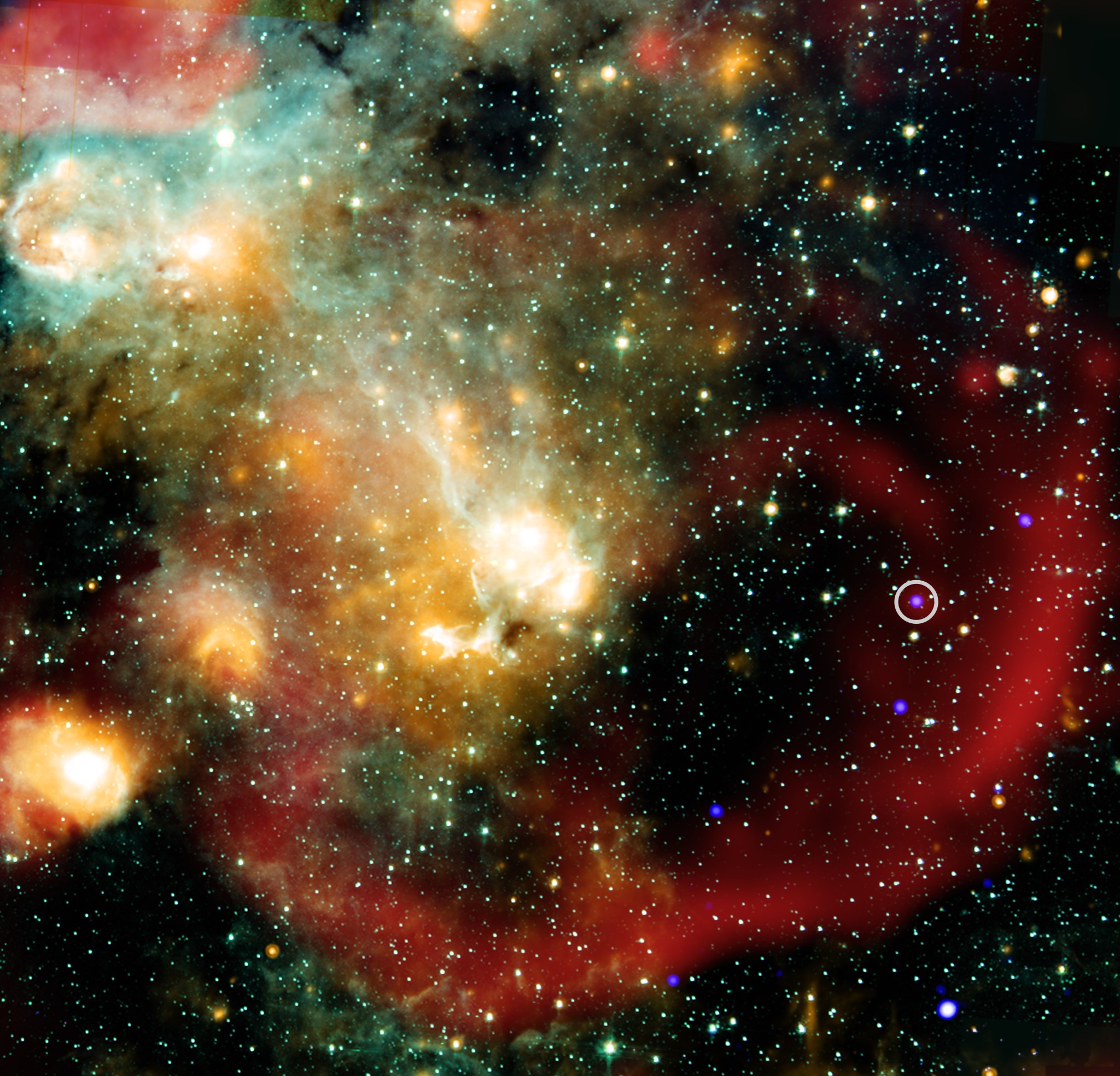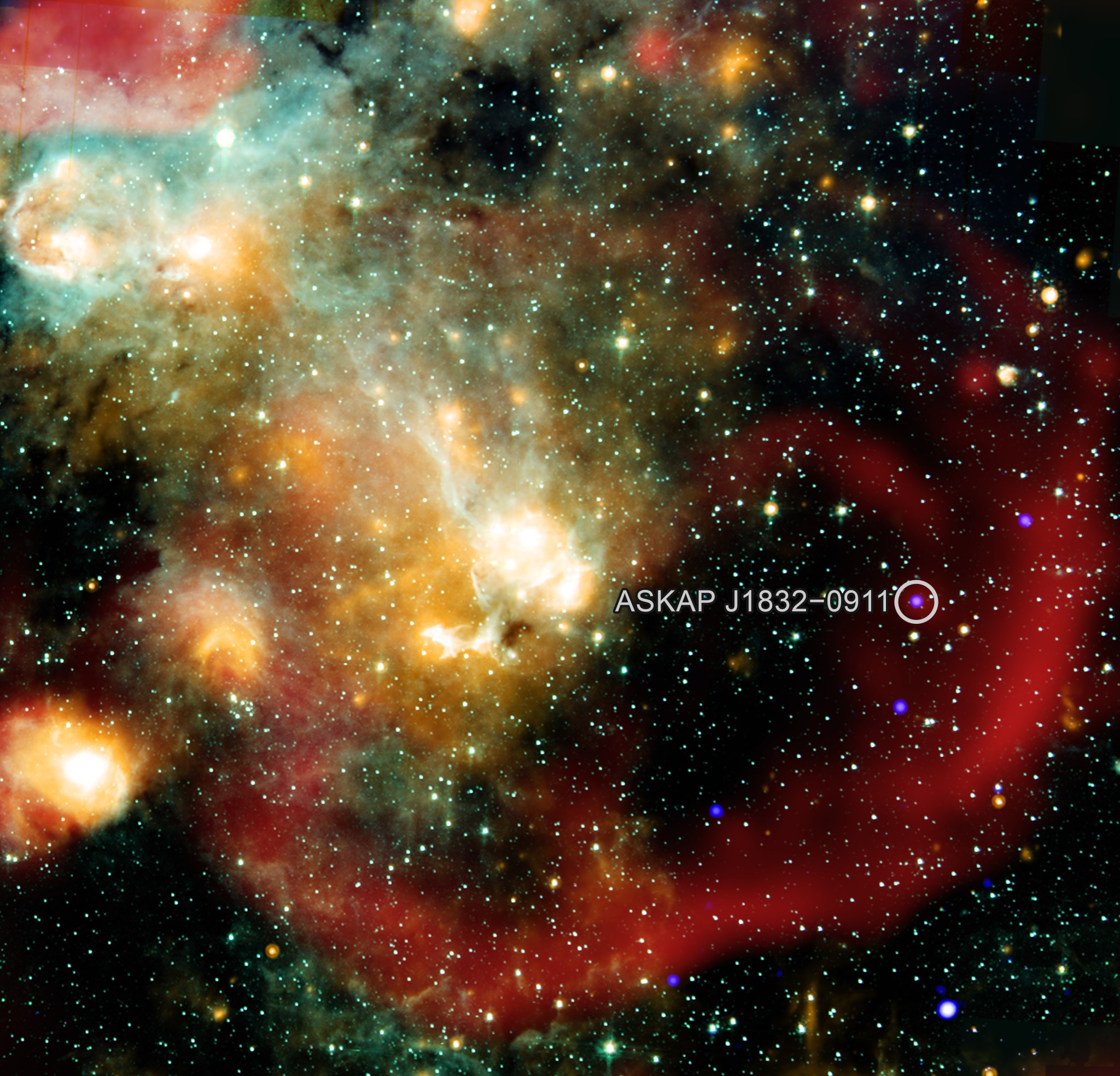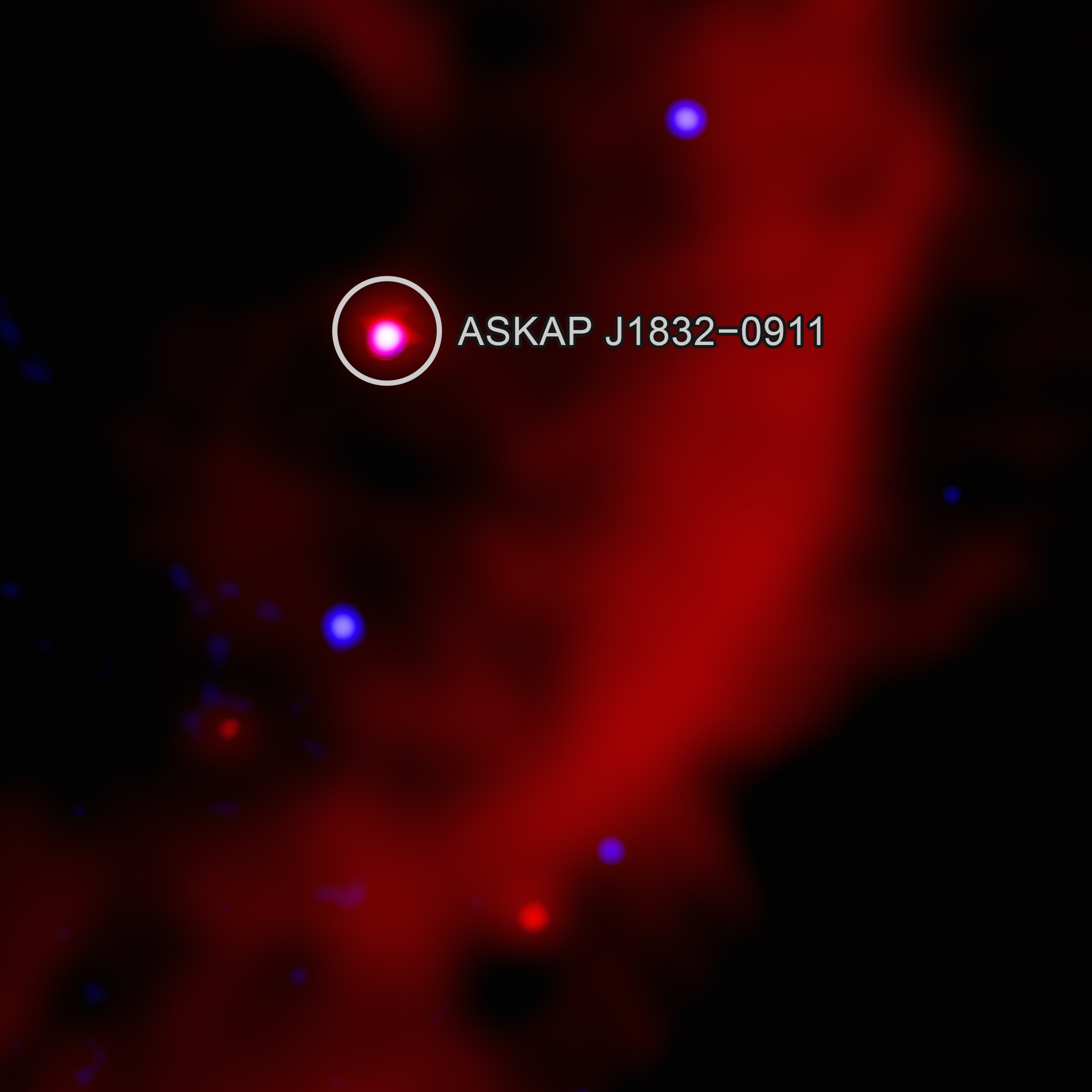
Scientists have discovered a star behaving like no other seen before, giving fresh clues about the origin of a new class of mysterious objects.
As described in our press release, a team of astronomers combined data from NASA's Chandra X-ray Observatory and the SKA [Square Kilometer Array] Pathfinder (ASKAP) radio telescope on Wajarri Country in Australia to study the antics of the discovered object, known as ASKAP J1832−0911 (ASKAP J1832 for short).
ASKAP J1832 belongs to a class of objects called "long period radio transients" discovered in 2022 that vary in radio wave intensity in a regular way over tens of minutes. This is thousands of times longer than the length of the repeated variations seen in pulsars, which are rapidly spinning neutron stars that have repeated variations multiple times a second. ASKAP J1832 cycles in radio wave intensity every 44 minutes, placing it into this category of long period radio transients.
Using Chandra, the team discovered that ASKAP J1832 is also regularly varying in X-rays every 44 minutes. This is the first time that such an X-ray signal has been found in a long period radio transient.
In this composite image, X-rays from Chandra (blue) have been combined with infrared data from NASA's Spitzer Space Telescope (cyan, light blue, teal and orange), and radio from LOFAR (red). An inset shows a more detailed view of the immediate area around this unusual object in X-ray and radio light.

Using Chandra and the SKA Pathfinder, a team of astronomers found that ASKAP J1832 also dropped off in X-rays and radio waves dramatically over the course of six months. This combination of the 44-minute cycle in X-rays and radio waves in addition to the months-long changes is unlike anything astronomers have seen in the Milky Way galaxy.

The research team argues that ASKAP J1832 is unlikely to be a pulsar or a neutron star pulling material from a companion star because its properties do not match the typical intensities of radio and X-ray signals of those objects. Some of ASKAP J1832's properties could be explained by a neutron star with an extremely strong magnetic field, called a magnetar, with an age of more than half a million years. However, other features of ASKAP J1832 - such as its bright and variable radio emission - are difficult to explain for such a relatively old magnetar.
On the sky, ASKAP J1832 appears to lie within a supernova remnant, the remains of an exploded star, which often contain a neutron star formed by the supernova. However, the research team determined that the proximity is probably a coincidence and two are not associated with each other, encouraging them to consider the possibility that ASKAP J1832 does not contain a neutron star. They concluded that an isolated white dwarf does not explain the data but that a white dwarf star with a companion star might. However, it would require the strongest magnetic field ever known for a white dwarf in our galaxy.
A paper by Ziteng Wang (Curtin University in Australia) and collaborators describing these results appears in the journal Nature. Another team independently discovered this source using the DAocheng Radio Telescope and submitted their paper to the arXiv on the same day as the team led by Dr Wang. They did not report the X-ray behavior described here.
NASA's Marshall Space Flight Center in Huntsville, Alabama, manages the Chandra program. The Smithsonian Astrophysical Observatory's Chandra X-ray Center controls science operations from Cambridge, Massachusetts, and flight operations from Burlington, Massachusetts.






